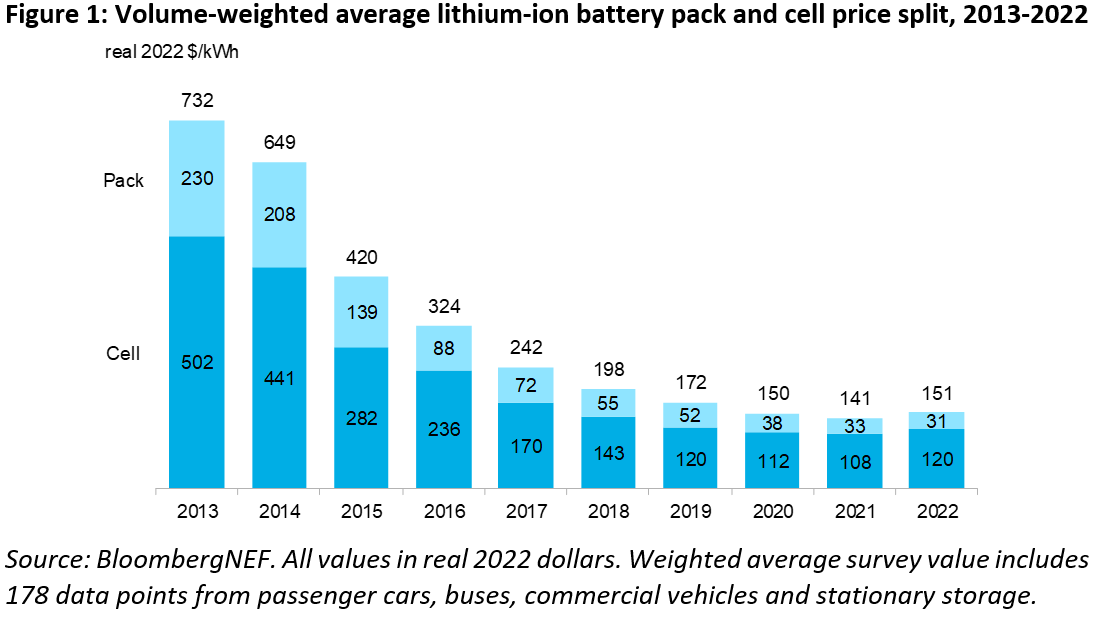
The Energy Storage System (ESS) Ready requirements are a new Mandatory Measure for new construction single family residences with one or two dwelling units. This means the requirement is applicable to new construction residences, town homes, duplexes, and ADUs (when built new, not an alteration or addition).
The purpose is to prepare the new construction building stock for the active and forecasted increase in home battery system availability. Batteries in Residential building stock is part of California’s plan to stabilize the electrical grid, and one way to promote installations is requiring that new homes are designed to accommodate them as they become cost competitive.
Per BloombergNEF, the average cost of a lithium-ion battery has dropped from $732/kWh to $151/kWh in the last ten years. As battery costs continue to come down in price, and electricity costs continue to increase, especially at peak hours, we can anticipate a continued increase in battery installations.

The ESS Ready requirements are more affordable to install during new construction rather than as a retrofit, which is why California has made it a Mandatory Measure for new construction projects.
Requirements
The Title 24 Part 6 Energy Standards ESS requirement is in four parts: branch circuits, amperage capacity, panel busbar and raceway/transfer switch, all geared toward future installation. Below are the specific requirements from Section 150.0(s) Energy Storage Systems Ready:
- A minimum of four branch circuits shall be identified and have their source of supply collected at a single panelboard suitable to be supplied by the ESS.
- At least one circuit shall supply the refrigerator,
- one lighting circuit located near the primary egress,
- and at least one circuit has to supply a bedroom receptacle outlet.
- You must provide at least one of the following.
- ESS ready interconnection equipment with a minimum backed up capacity of 60 amps and a minimum of four ESS supplies branch circuits. OR,
- A dedicated raceway from the main service to a subpanel that supplies the branch circuits in
- The main panel must have a minimum busbar rating of 225 amps.
- Sufficient space shall be reserved to allow future installation of a systems isolation equipment/transfer switch within 3 feet of the main panelboard. Raceways shall be installed between the panelboard and the system isolation equipment/transfer switch location to allow the connection of backup power source.
Additional questions have already come up regarding the ESS requirements and have been clarified by the CEC in their Blueprint Newsletter, highlighted here:
CEC Blueprint 141 FAQ
Could a 200 amp panel meet the mandatory energy storage system (ESS) ready requirements in the 2022 Energy Code § 150.0(s)1B?
Yes. A 200 amp panel could meet the requirement if the busbar rating is 225 amps and it is clearly marked on the panel. However, if there is no specific busbar rating on the panel, the 200 amp panel will not meet the requirement, since the busbar rating will be the same as the panel rating. Panels must also meet applicable requirements in the California Electrical Code.
Does an ADU need to have its own 225 amp panel if the ADU is built with a subpanel connected to the existing main residence?
No. The subpanel to the ADU from the main panel could meet § 150.0(s)1B, as long as the main panel has the 225 amp busbar rating.
Does installing a battery storage system in a newly constructed single-family home meet the mandatory ESS ready requirements in § 150.0(s)?
Yes. If the newly built home’s energy storage system meets all the necessary wiring and other electrical components required to support a fully operating energy storage system, this will satisfy the mandatory requirements in § 150.0(s).
Finally, of course, all electrical components must be installed in accordance with the California Electrical Code, Title 24 Part 3.
Conclusion
California continues to move toward building electrification by setting electric heat pump water heaters as the prescriptive baseline in most cases. However, there are several exceptions to be considered, as well as a detailed look at hot water distribution, to make sure that the best system is selected, and code compliance is achieved.
For more about this topic or other Energy Code/Title 24 compliance questions, contact a 3C-REN Energy Code Coach.
